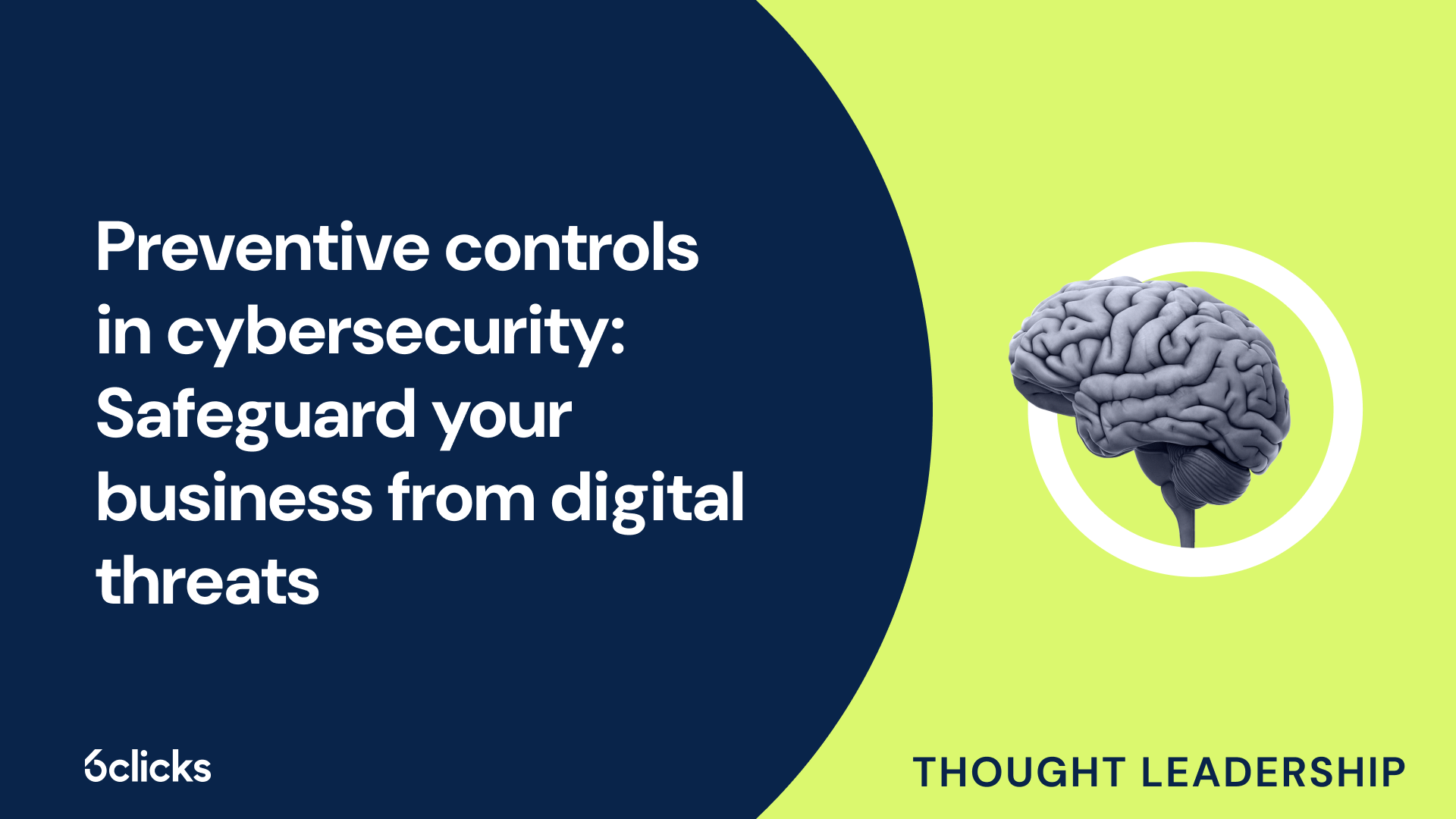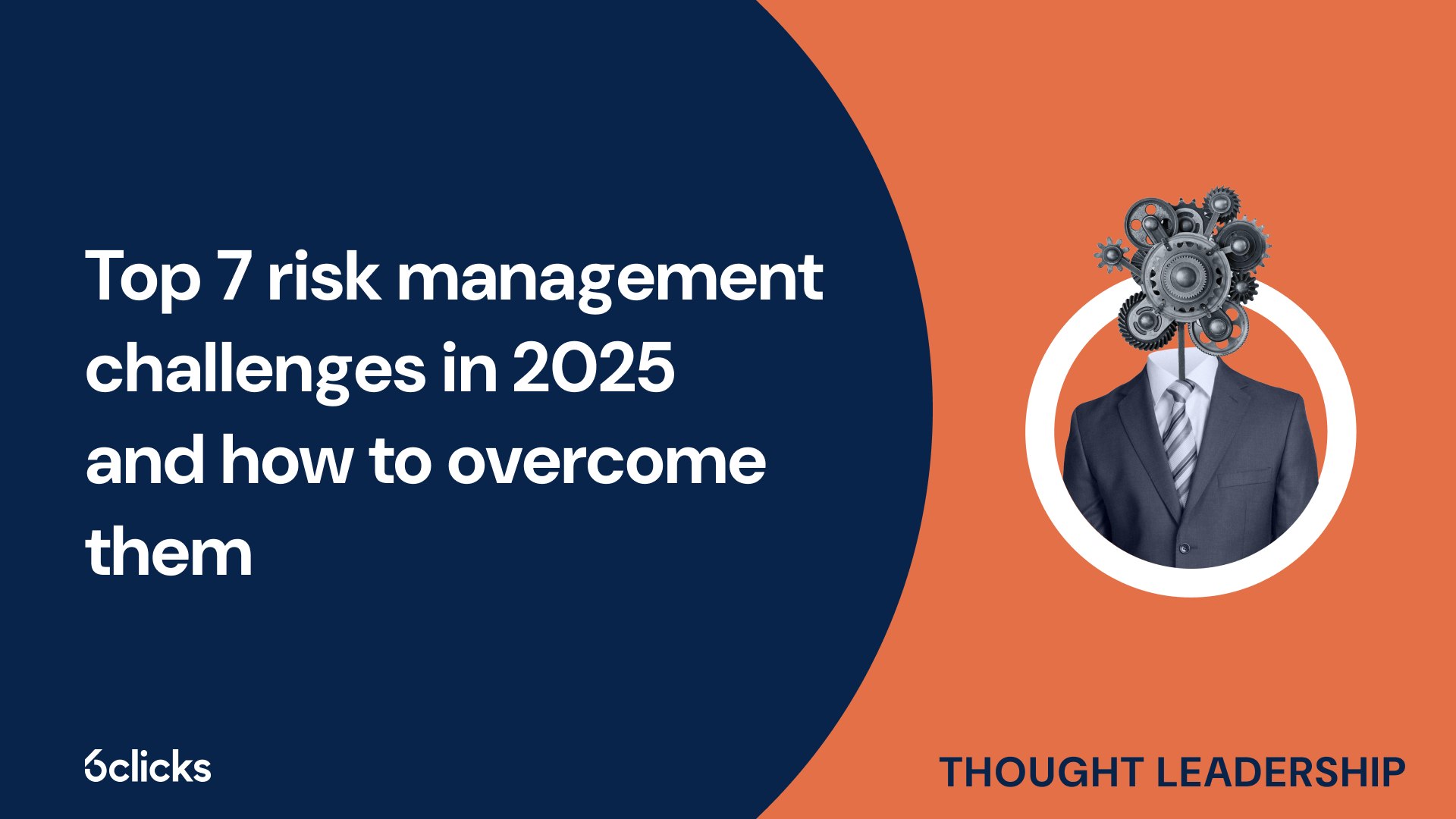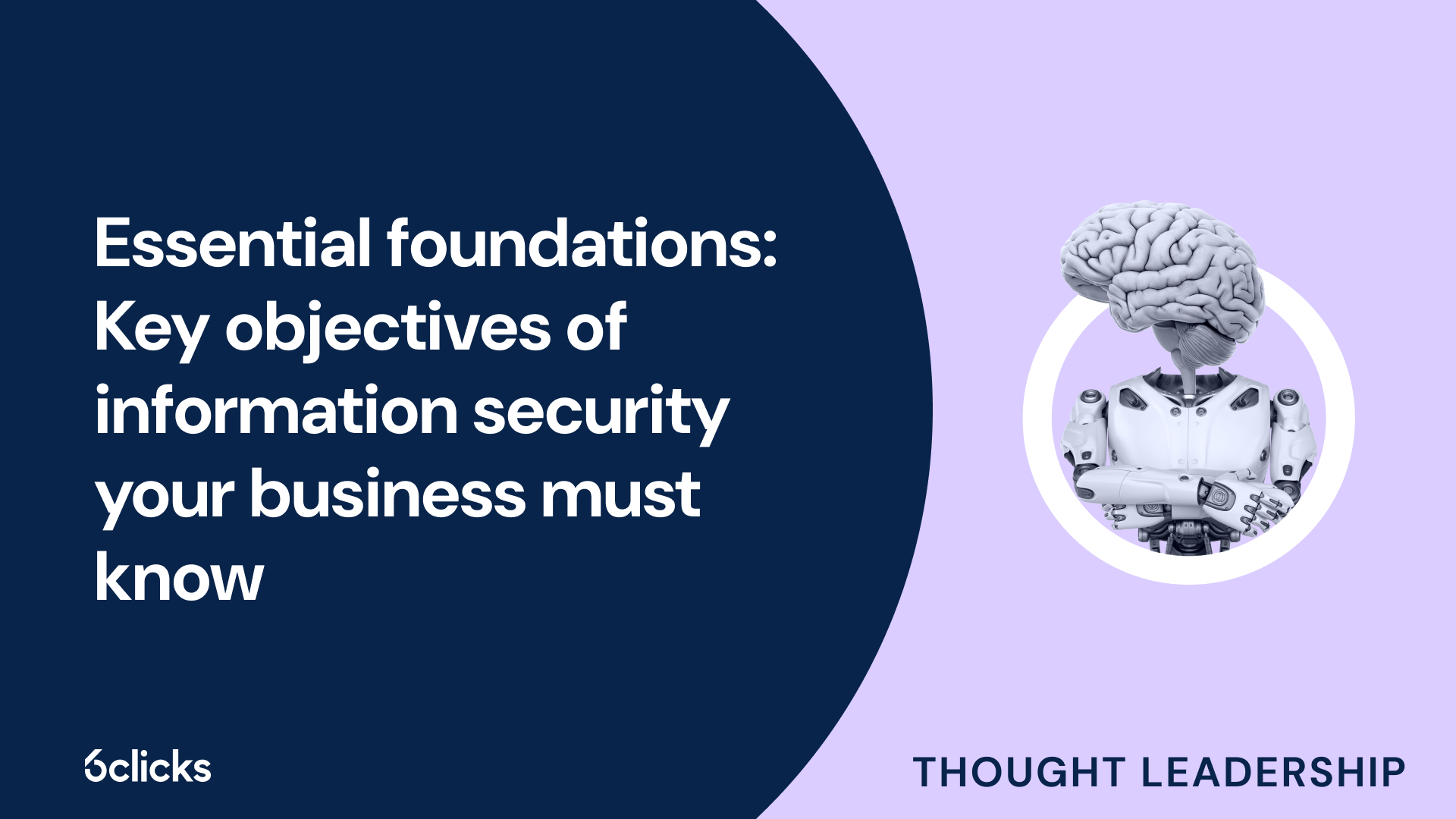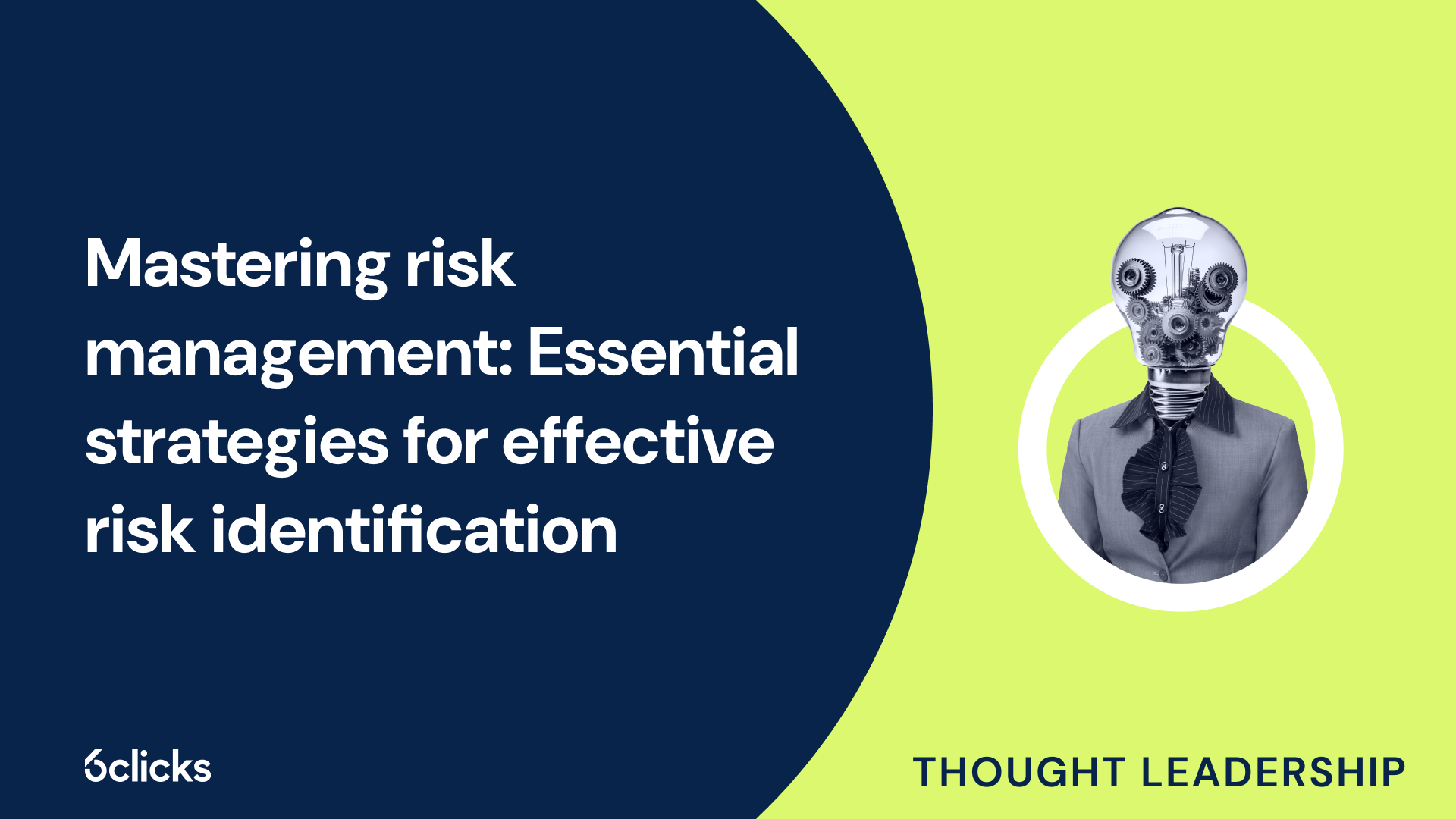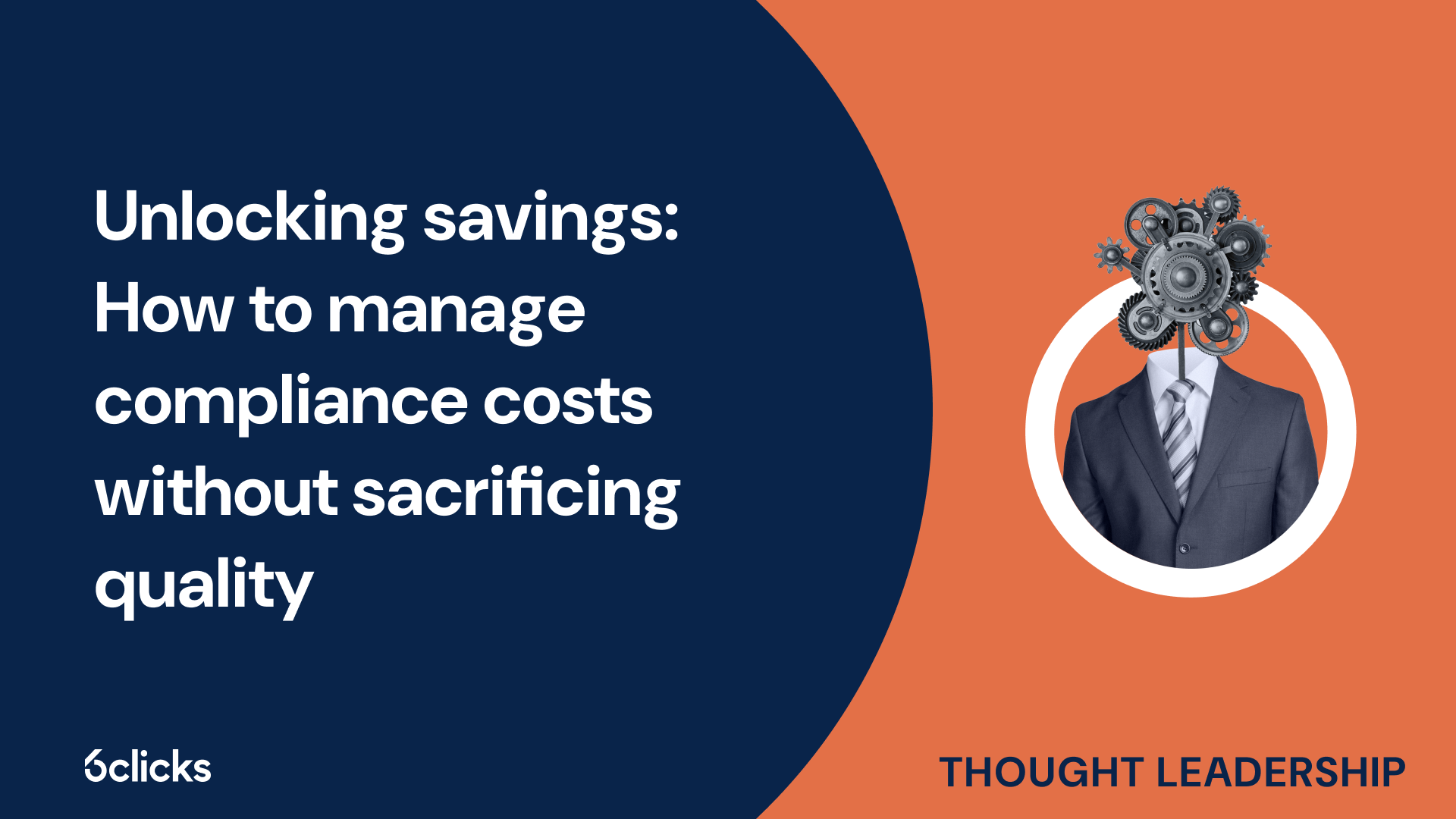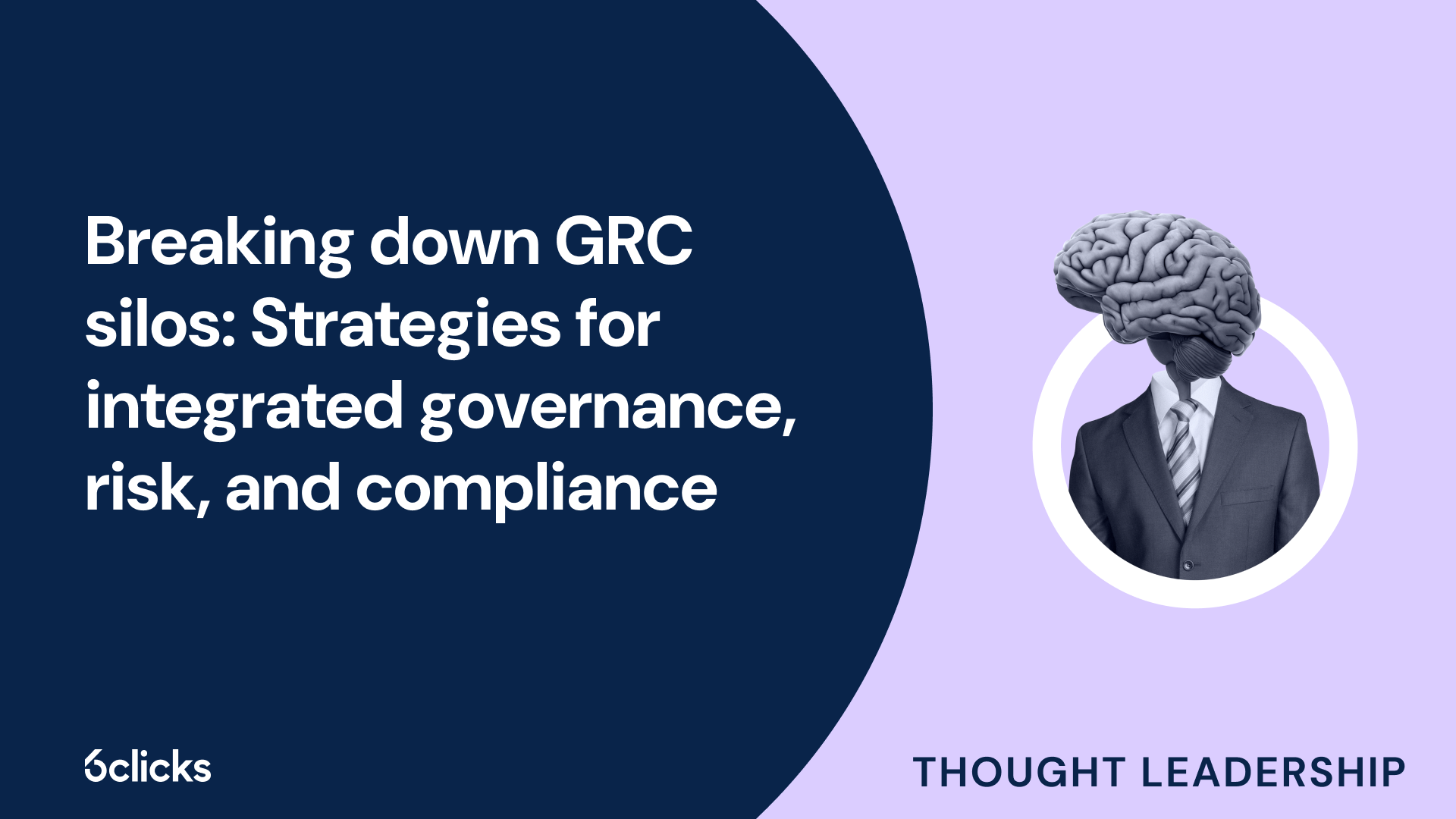The GRC buyer’s guide for 2025: Building resilience with AI-powered, federated solutions
Discover the ultimate GRC buyer's guide for 2025! Uncover how AI-powered, federated solutions transform compliance and security management for industries like government, aerospace, banking, and more. Learn about centralized control, continuous compliance, and advanced cyber GRC capabilities. Download now!
-1.png?width=200&height=249&name=Group%20193%20(1)-1.png)
The GRC buyer’s guide for 2025: Building resilience with AI-powered, federated solutions
Definition of information security management
Information security management is essential for organizations to protect their sensitive data and ensure the confidentiality, integrity, and availability of their information. It involves implementing a set of measures, policies, controls, and procedures to safeguard organizational assets, such as physical and digital resources, from potential risks and security breaches. By having a well-defined information security management program, organizations can effectively manage the risk of security incidents, mitigate vulnerabilities, and establish a resilient and secure environment. In this article, we will explore the five key components of information security management that organizations should focus on to build a robust and effective security strategy: risk assessment, security policies and procedures, security controls, asset management, and incident response and recovery. Let's delve into each of these components to understand their significance and the role they play in ensuring the security of organizational information.
Overview of the 5 components of information security management
Information security management comprises five key components: security measures, security policies and procedures, physical and environmental protection, monitoring processes and systems, and asset management.
- Security Measures: These include protective measures implemented to safeguard information and systems from unauthorized access, malicious attacks, and potential breaches. Examples of security measures include firewalls, antivirus software, encryption, and access controls.
- Security Policies and Procedures: Security policies outline rules and guidelines for protecting information assets. Procedures provide step-by-step instructions on implementing security measures and responding to security incidents. Well-defined policies and procedures help establish a security-conscious organizational culture and ensure consistency in security practices.
- Physical and Environmental Protection: Physical security measures focus on securing physical assets, such as servers, data centers, and other critical infrastructure. This component includes access controls, surveillance systems, and environmental controls (e.g., temperature and humidity monitoring) to protect against theft, damage, or disruption caused by natural disasters or human error.
- Monitoring Processes and Systems: Monitoring is crucial for detecting security incidents, unauthorized access attempts, and unusual activities. It involves the use of intrusion detection systems, log analysis, and other tools to identify and respond to security breaches promptly. Continuous monitoring helps minimize the risk of security incidents and enables effective response and forensic analysis.
- Asset Management: This component involves identifying and managing organizational assets, including hardware, software, data, and intellectual property. It includes maintaining an inventory of assets, assessing asset vulnerabilities, and implementing mitigation activities to protect against potential risks. Asset management ensures the resilience of systems and helps prioritize security efforts based on their criticality.
Each component of information security management is important in providing a comprehensive and effective defense against security threats. By implementing security measures, establishing security policies and procedures, protecting physical assets, monitoring for security incidents, and managing assets effectively, organizations can ensure the confidentiality, integrity, and availability of their information.
Component 1: security measures
Security measures are essential components of information security management that are implemented to protect information and systems from unauthorized access, malicious attacks, and potential breaches. These measures consist of a wide range of protective measures that serve as the first line of defense against security threats. By implementing security measures such as firewalls, antivirus software, encryption, and access controls, organizations can establish barriers that safeguard their assets and ensure the confidentiality, integrity, and availability of sensitive information. These measures work collectively to create a robust security posture that mitigates risks and enhances the resilience of systems. In this article, we will explore the five key components of information security management, starting with security measures.
Types of security measures
In order to enhance information security, organizations can implement various types of security measures. These measures are designed to protect sensitive data and systems from unauthorized access, misuse, and other potential risks. Examples of common security measures include:
- Encryption: This involves the use of algorithms to convert data into an unreadable format, which can only be decrypted with the appropriate key. Encryption ensures that even if the data is intercepted, it remains protected and confidential.
- Firewalls: These act as a barrier between internal networks and external networks, such as the internet. Firewalls monitor and control incoming and outgoing network traffic, preventing unauthorized access and blocking malicious activities.
- Access Controls: Access controls are mechanisms that enforce restrictions on who can access certain resources or perform specific actions within an organization's systems. These controls include user authentication, user authorization, and user activity monitoring.
- Intrusion Detection Systems (IDS): IDS are designed to detect and respond to potential security breaches. They monitor network traffic and system logs for suspicious activities and generate alerts or take other actions to mitigate the risk.
By implementing a combination of security measures such as encryption, firewalls, access controls, and intrusion detection systems, organizations can enhance their information security posture and better protect their valuable assets from various threats and risks.
Examples of security measures
There are various security measures that can be implemented to protect information and systems from potential security breaches. These measures play a crucial role in mitigating security risks and ensuring the confidentiality, integrity, and availability of data. Some examples of security measures include:
- Access controls: Implementing strong access controls helps restrict unauthorized individuals from gaining access to sensitive information or critical systems. This includes practices such as user authentication, role-based access control, and password policies.
- Encryption: Encryption is a powerful tool that converts data into an unreadable format, making it difficult for unauthorized individuals to access or comprehend the information. By implementing encryption, organizations can ensure that even if the data is intercepted, it remains protected.
- Firewalls and network security: Firewalls act as a first line of defense, monitoring and controlling network traffic to prevent unauthorized access. By implementing firewalls and other network security measures such as intrusion prevention systems and virtual private networks, organizations can protect their systems from malicious attacks.
- Security awareness training: Educating employees about security best practices and potential risks is an essential security measure. By raising awareness and promoting good security behaviors, organizations can minimize the risk of security incidents caused by human error or negligence.
- Regular security assessments and updates: Conducting regular security assessments and updates helps identify vulnerabilities and weaknesses in systems and software, allowing organizations to take necessary protective measures and apply patches to prevent potential breaches.
These security measures are vital in protecting information and systems from potential risks and security breaches. By implementing these measures, organizations can significantly enhance their security posture and ensure the confidentiality, integrity, and availability of their data.
Component 2: security policies and procedures
Security policies and procedures play a crucial role in the effective management of information security. These policies provide guidelines and instructions for organizations to ensure the confidentiality, integrity, and availability of their information and systems. Security policies outline the goals and objectives of the organization's information security program and define the responsibilities of employees and users. They also establish guidelines for acceptable use of technology resources and specify consequences for non-compliance. Procedures, on the other hand, provide step-by-step instructions on how to implement and enforce the policies. They outline the processes and actions that need to be taken in various scenarios to protect the organization's assets and mitigate potential risks. By implementing and regularly updating security policies and procedures, organizations can establish a strong and consistent foundation for their information security program.
Writing effective policies and procedures
Writing effective policies and procedures for information security management is crucial for organizations to protect their assets and minimize the risk of security incidents. There are several key considerations that should be taken into account when developing these policies and procedures.
Firstly, it is essential to ensure alignment with regulations and compliance standards such as the General Data Protection Regulation (GDPR) and the California Consumer Privacy Act (CCPA). Compliance with these standards is not only required by law but also helps organizations to establish a strong foundation for their security measures.
Additionally, cooperation between departments is critical to reduce configuration errors and ensure a comprehensive approach to security. Different teams, such as IT, HR, and legal, should work together to establish and enforce security measures consistently.
Transparent and well-communicated acceptable use policies play a vital role in preventing data breaches. These policies outline the acceptable and unacceptable uses of organizational resources, including proper handling of sensitive data and appropriate use of company-owned devices.
Last but not least, writing effective policies and procedures should align with business objectives. The security measures implemented should not hinder productivity but work in harmony with the organization's goals.
By considering these key factors - regulations and compliance standards, cooperation between departments, transparent acceptable use policies, and alignment with business objectives - organizations can develop robust policies and procedures that mitigate potential risks and strengthen the overall security posture.
Benefits of establishing policies and procedures
Establishing policies and procedures is crucial in information security management as it brings numerous benefits to organizations. These benefits include:
- Consistent and standardized approaches: Well-defined policies and procedures help organizations establish consistent and standardized approaches to information security. This ensures that security measures are applied uniformly throughout the organization, reducing the risk of security incidents and breaches.
- Clear guidelines for employees: Policies and procedures provide clear guidelines for employees on how to handle sensitive data, use company-owned devices, and follow security protocols. This promotes awareness and responsible behavior among employees, reducing the likelihood of unintentional security vulnerabilities.
- Increased compliance with regulations and standards: Having robust policies and procedures in place helps organizations comply with various regulations and standards such as GDPR, CCPA, PCI DSS, SOX, and HIPAA. These policies outline the required security measures and controls, ensuring that organizations adhere to legal requirements and industry best practices.
- Effective response to security incidents: Policies and procedures establish a framework for responding to security incidents effectively. They define roles and responsibilities, escalation procedures, and communication protocols, enabling organizations to detect, respond to, and mitigate security incidents promptly and efficiently.
- Enhanced risk management: Policies and procedures support a proactive approach to risk management. They provide guidelines for risk assessment, vulnerability management, and the implementation of appropriate controls. By identifying and addressing potential risks, organizations can enhance their overall security posture and protect sensitive data.
Component 3: physical and environmental protection
Physical and environmental protection is a crucial component of information security management. It includes measures and controls that safeguard the physical assets and environments where sensitive information is stored, processed, and transmitted. This component focuses on protecting against physical threats, such as unauthorized access, theft, damage, and natural disasters. By implementing physical security controls and policies, organizations can ensure the physical resilience of their systems and assets, preventing potential breaches and disruptions. This component encompasses a wide range of protective measures, including access controls, surveillance systems, secure facility design, and disaster recovery plans. A robust physical and environmental protection strategy is essential for maintaining the confidentiality, integrity, and availability of organizational assets and sensitive information.
General requirements for physical protection
Physical protection is a critical component of information security management that focuses on safeguarding organizational resources and assets from unauthorized access, theft, damage, or loss. To ensure effective physical protection, several general requirements must be considered.
First and foremost, access to systems, key facilities, and sensitive areas should be restricted to authorized personnel only. This can be achieved through the implementation of physical access controls, such as access cards, keys, biometric identification, or a combination of these measures. Additionally, the use of video surveillance and alarm systems can help monitor and detect any unauthorized individuals or suspicious activities.
Another important requirement is the physical resilience of systems and infrastructure. Measures should be put in place to protect against natural disasters, fire, flooding, or other hazards that may pose a risk to organizational assets. This may include proper infrastructure design, backup power supplies, fire suppression systems, and offsite storage for critical data and resources.
Asset management is also essential in physical protection. It involves identifying, classifying, and inventorying organizational assets based on their importance and value. This enables effective prioritization of protective measures and allocation of resources.
Furthermore, regular risk assessments should be conducted to evaluate potential risks and vulnerabilities that may impact physical protection. Mitigation activities can then be implemented to address identified risks and ensure the overall security of organizational resources.
Role of environmental controls in protecting assets
Environmental controls play a crucial role in protecting assets and ensuring the overall security of information systems. These controls contribute to the physical protection of assets by creating a secure environment that safeguards against various risks and threats.
Implementing measures such as temperature and humidity control is essential for preserving the integrity and functionality of information systems and assets. Maintaining optimal temperature and humidity levels helps prevent the degradation or malfunctioning of hardware components, ensuring the continuity of operations. Additionally, controlled environmental conditions help protect sensitive data stored on physical media, such as servers or backup tapes, by preventing damage or corruption.
Fire suppression systems are another vital aspect of environmental controls. Fires can cause significant damage to information systems and assets, leading to data loss, operational disruptions, and even financial losses. By deploying fire suppression systems, organizations can effectively mitigate the risk of fire-related incidents. These systems detect and suppress fires quickly, minimizing the potential impact on equipment and protecting critical data.
Furthermore, physical access controls contribute to the protection of assets by limiting unauthorized access to sensitive areas and information systems. These controls may include security measures such as access cards, biometric identification, or surveillance systems. By restricting access to authorized personnel only, organizations can prevent unauthorized individuals from tampering with or stealing sensitive information, reducing the risk of security breaches.
Component 4: monitoring processes and systems
Monitoring processes and systems are a critical component of information security management. An effective monitoring system plays a crucial role in detecting and responding to potential security incidents in a timely manner. It involves regularly monitoring the organization's networks, systems, and applications to identify any unusual activity or potential security breaches. By implementing robust monitoring processes, organizations can proactively identify and investigate any suspicious actions, allowing them to take appropriate action before significant damage occurs. This component also includes monitoring access to systems, ensuring that only authorized users are granted access and detecting any unauthorized or suspicious activities. Additionally, monitoring processes and systems enable organizations to track compliance with security policies and procedures, identifying any gaps or vulnerabilities that need to be addressed. With a well-established monitoring system in place, organizations can enhance their overall security posture, minimize the risk of security incidents, and respond effectively to any security threats that may arise.
Different types of monitorings processes
Different types of monitoring processes play a crucial role in effective information security management. Two key processes are risk monitoring and incident management.
Risk monitoring involves continuous assessment and evaluation of potential risks and vulnerabilities to the organization's information assets. It helps identify and prioritize security threats, enabling proactive measures to be taken, such as implementing security controls and mitigation activities. By constantly monitoring risks, organizations can stay ahead of potential security breaches and incidents, ensuring the resilience of their systems and protecting their assets.
Incident management, on the other hand, focuses on the swift and effective response to security incidents. This process involves detecting, reporting, and responding to security breaches or suspicious activities as and when they occur. Incident management helps minimize the impact of security incidents by enabling a rapid and well-coordinated response. Through incident management, organizations can mitigate the potential damage caused by security incidents, protect key systems and data, and efficiently restore normal operations.
These monitoring processes are not only important for the security of information assets but also for demonstrating the effectiveness of the organization's security program. By documenting the monitoring activities and their outcomes, organizations can provide evidence of their commitment to security measures and their proactive approach to identifying and managing security risks. Furthermore, these processes help address compliance issues by ensuring that security measures are in line with relevant regulations and standards.
Ensuring that monitoring is effective
Ensuring that monitoring is effective is crucial in information security management. To achieve this, there are key factors and strategies that need to be considered.
Firstly, regular risk assessments play a significant role in identifying and evaluating potential threats and vulnerabilities to an organization's information assets. By conducting these assessments, organizations can prioritize security measures and focus on areas that require immediate attention. It helps in understanding the current security landscape and enables the implementation of proactive security controls.
Continuous improvement is another essential aspect in maintaining effective monitoring processes. As new threats emerge and technology advances, it is necessary to constantly enhance and update security measures. By regularly analyzing the effectiveness of existing controls and evaluating the latest security trends and practices, organizations can iteratively improve their security posture.
The Plan-Do-Check-Act (PCDA) model provides a framework for ongoing improvements and evolution of security policies and controls. In the planning phase, organizations identify security objectives and develop strategies to achieve them. In the doing phase, the planned security measures are implemented. The checking phase involves monitoring and reviewing the effectiveness of these measures. Finally, in the acting phase, necessary adjustments and improvements are made to enhance security controls based on the findings from the checking phase.
Component 5: asset management
Asset management is a critical component of information security management, as it involves identifying, classifying, and managing an organization's valuable assets. These assets can include not only digital information such as databases, software, and intellectual property, but also physical assets like hardware, equipment, and facilities.
Effective asset management aids in mitigating risks and protecting organizational assets in several ways. By identifying and classifying assets, organizations gain a clear understanding of their value and can prioritize their protection accordingly. This allows for the allocation of resources and implementation of appropriate security controls based on the asset's importance and potential impact on the organization.
Assessing vulnerabilities is another key activity in asset management. By regularly auditing and evaluating the security posture of assets, organizations can identify weaknesses and take proactive measures to address them. This can involve implementing protective measures such as encryption, access controls, and firewalls to enhance the resilience of systems and restrict unauthorized access.
Furthermore, asset management involves conducting regular audits to ensure compliance and adherence to security policies and procedures. By performing these audits, organizations can identify any gaps or vulnerabilities and take corrective actions to strengthen security measures. Regular audits also enable organizations to monitor the effectiveness of their asset management practices and make necessary adjustments to ensure ongoing protection.
Risk assessment is a fundamental part of asset management. By conducting risk assessments, organizations can identify and prioritize potential risks to their assets, both digital and physical. These assessments involve evaluating the likelihood and impact of various threats, such as data breaches, natural disasters, or malicious attacks. This allows organizations to develop risk mitigation strategies and allocate resources accordingly to minimize potential impacts.



